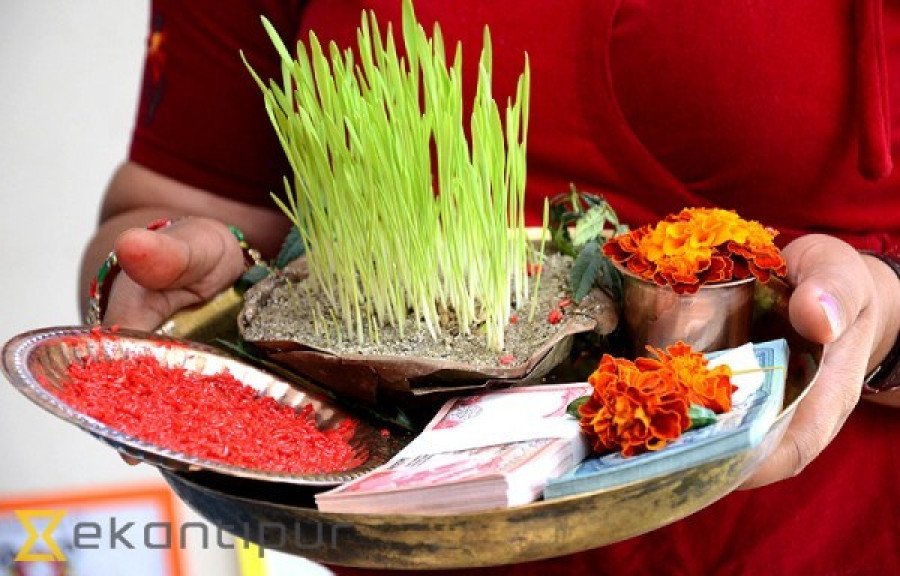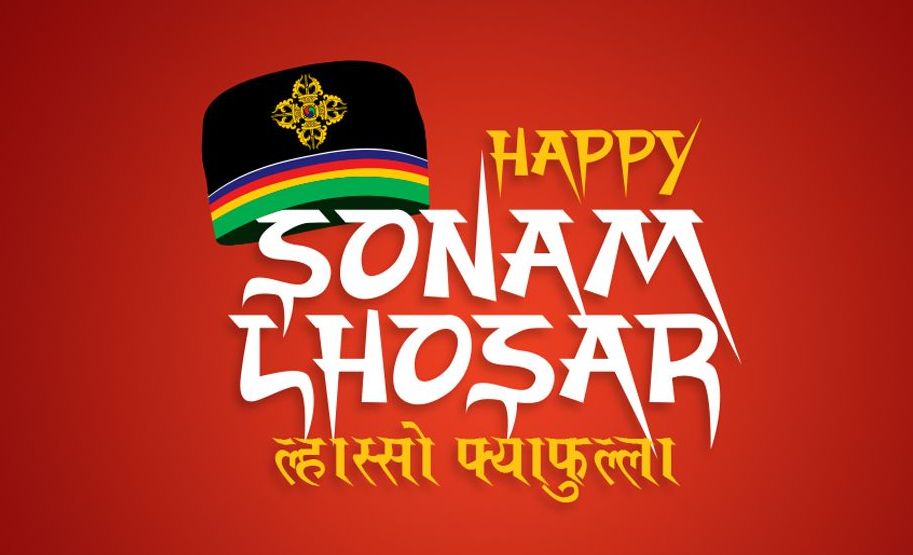Dashain or Baḍadashain (बडादशैँ) also referred as Vijaya Dashami, is a major Hindu religious festival in Nepal.[3] It is also celebrated by Hindus in some parts of India and elsewhere in the world,[4] including among the Lhotshampa of Bhutan[5] and the Burmese Gurkhas of Myanmar. The festival is also referred as Nauratha derived from the Sanskrit word for the same festival Navaratri which literally translates to Nine Nights.[6] A version of this festival is celebrated as Navaratri, Dussehra or Dashera by Hindus in India, although rites and rituals vary significantly.
It is the longest and the most auspicious festival in the Bikram Sambat and Nepal Sambat annual calendars, celebrated by Nepalese people especially Khas Pahadi Hindus, along with their diaspora throughout the globe. In Nepal, it is also known as the biggest festival of the country and is the longest national/public holiday, 5 days to be exact. It is the most anticipated festival in Nepal. People return from all parts of the world, as well as different parts of the country, to celebrate together.[4] All government offices, educational institutions, and other offices remain closed during the festival period. The festival falls in September or October, starting from the shukla paksha (bright lunar night) of the month of Ashwin and ending on Purnima, the full moon. Among the fifteen days on which it is celebrated, the most important days are the first, seventh, eighth, ninth, tenth, and fifteenth.
Among the Newar of the Kathmandu Valley, Dashain is popularly celebrated as Mohani and is celebrated as the most important festival of Nepal Sambat calendar year.[8] Among Hindu and Buddhist Newars, it is celebrated with variations where each nine days Navaratri (Newar: नवरात्री) leading up to the 10th day, called Dashami, carry special importance, with the most important days being the Ghatasthapana, Maha Asthami (8th-day), Maha Nawami (9th-day) and Maha Dashami.[9] The goddess Durga and her various manifestations are especially worshiped by Newars throughout the Shaktipeeths of Kathmandu Valley. Among Newars, Dashain is also important for its emphasis on family gatherings as well as on a renewal of community ties, highlighted by special family dinners called Nakhtyā (Newar: नख्त्या) and various communal processions of deities called Jātrā (Newar: जात्रा) throughout the three royal cities of Nepal


